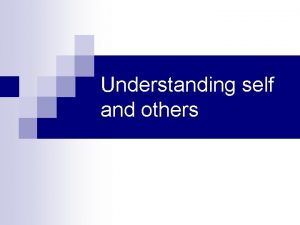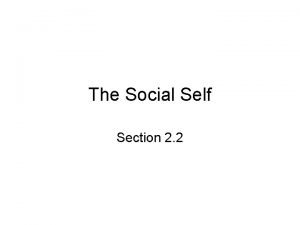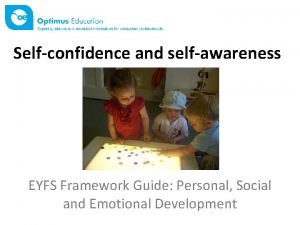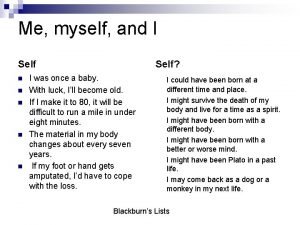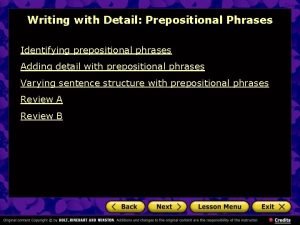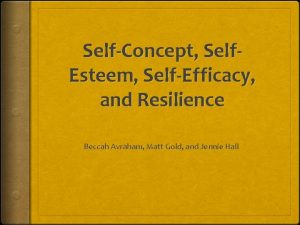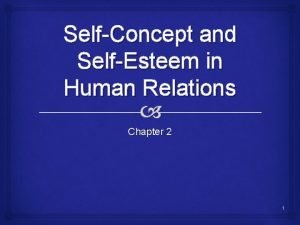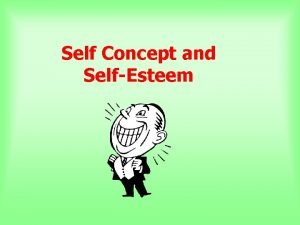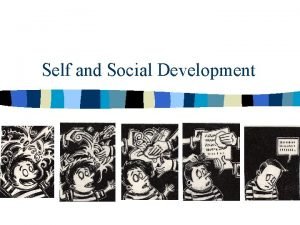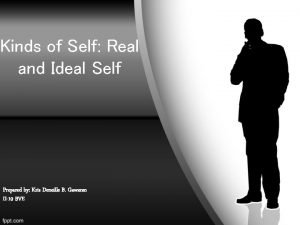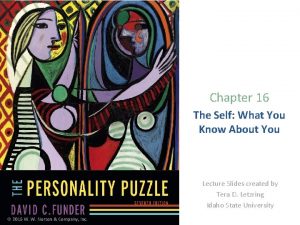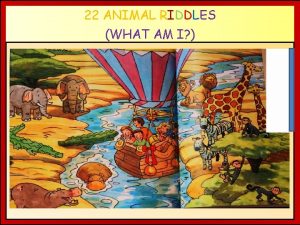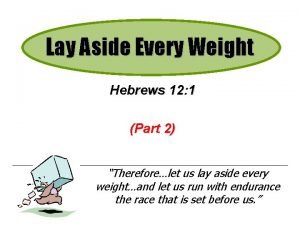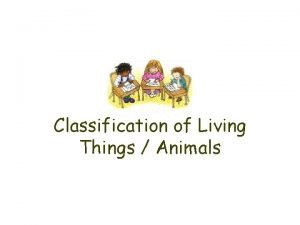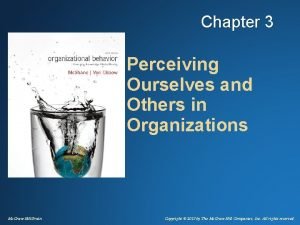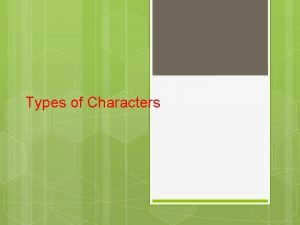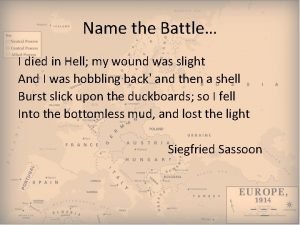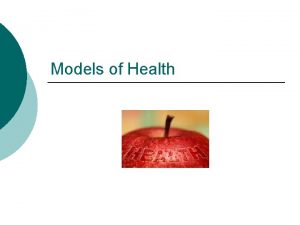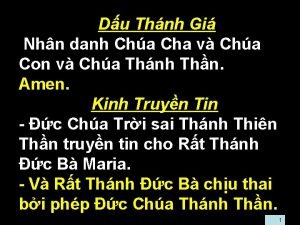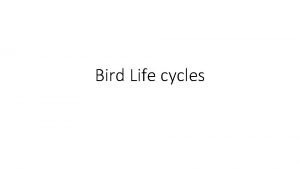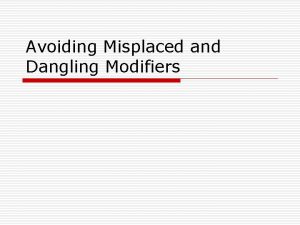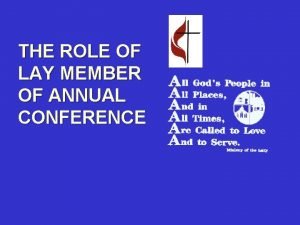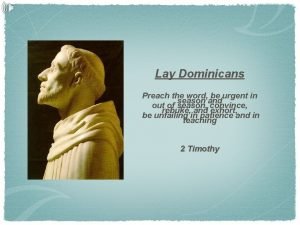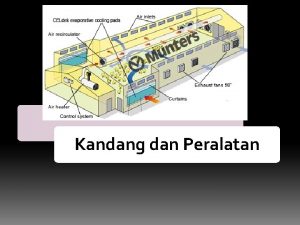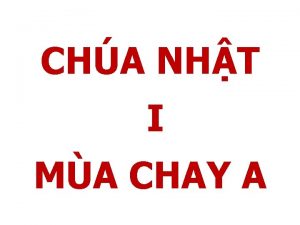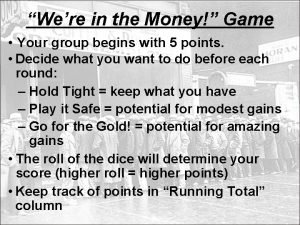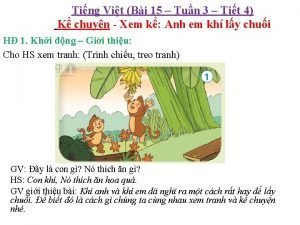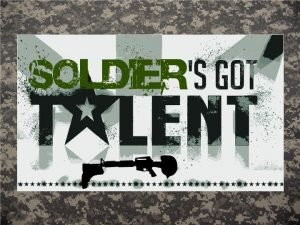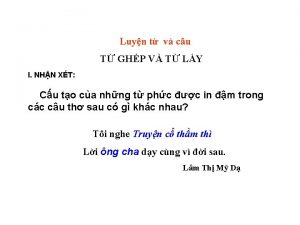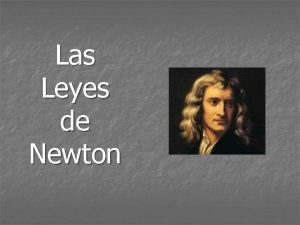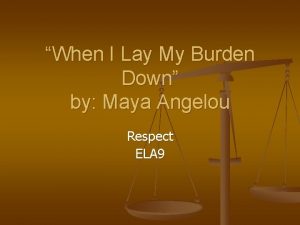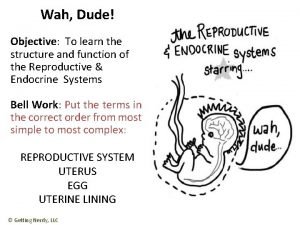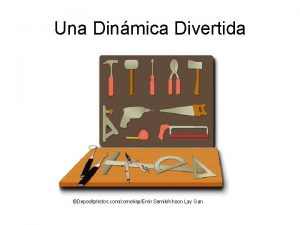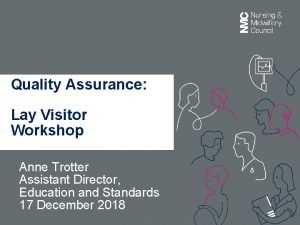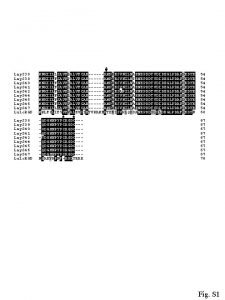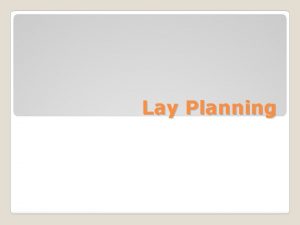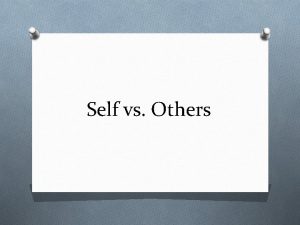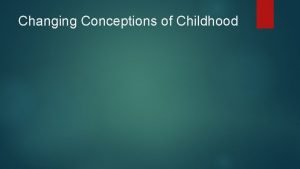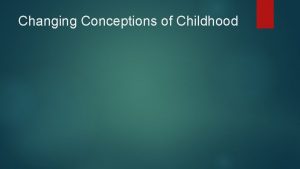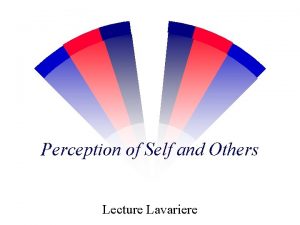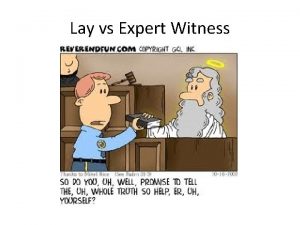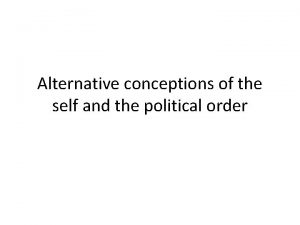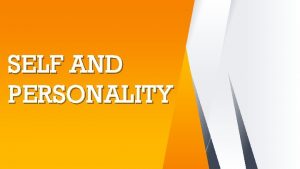Lay Theories Conceptions of Self and Others Impact












































![Teacher: Have you noticed changes? • [In my class they] use the memory terminology Teacher: Have you noticed changes? • [In my class they] use the memory terminology](https://slidetodoc.com/presentation_image_h2/74f8ebbcf14c78236092b3b9add628ab/image-45.jpg)
































- Slides: 77

Lay Theories Conceptions of Self and Others

Impact of Lay Theories in Older Children Theories of Intelligence--> Goals--> Helpless and Mastery-Oriented Pattern • Attributions • Affect • Behavior

Impact of Children’s Lay Theories Entity (Fixed) Theory of Intelligence--> Performance Goals (Prove Ability)--> Vulnerable to Helpless Pattern: • Low Ability Attributions • Negative Affect • Low Persistence

Impact of Children’s Lay Theories Incremental (Malleable) Theory of Intelligence--> Learning Goals (Increase Ability)--> Mastery-Oriented Pattern: • Effort/Strategy Attributions • More Positive Affect • High Persistence

Are Young Children Protected?

Why Might Young Children Be Protected? 1. Don’t understand intelligence 2. Survival of the species

Heyman, Dweck, & Cain (1992) 3 Mistake Scenarios: feet, windows, #8 1 scenario with no feedback--baseline 2 with criticism from teacher

Heyman, Dweck, & Cain (1992) Product Rating after criticism Self-Blame • Self-ratings of goodness • Expectation of criticism, punishment Affect Helpless vs. M-O Behavior • Persistence • Constructive Solutions (see next slide) Theories: Beliefs about badness

• • • ”I really like your painting and I know you worked very hard at it, and I'm glad I gave you extra time, and it's fun having paintings even when they aren't already done, and you have to spend some extra time, but I know that I still really like your painting. ”

Questions About Development • Goodness system in place by 5; intelligence system not until 10. Why so long? • Having a theory vs. having a theory with motivational impact • Unlike much of cognitive development, doesn’t proceed toward one correct view • Is there a trend toward one theory over time? • Are these really theories? Are they being tested?

Is Intelligence Malleable? • Can executive function (at the heart of intellectual functioning) can be taught? Diamond, Barnett, Thomas, & Munro, 2007 • 147 5 -yr. olds, low income, urban • Two curricula covering same academic content: identical resources, instruc. mater. • “Tools of the mind” curriculum stressed exec. function


Executive Function: Working Memory • holding information in mind and working with it (e. g. , relating one idea to another, relating the beginning of a story to the end, doing mental arithmetic) • or holding information in mind while working on something else (e. g. , mentally holding onto information during an interruption or while you have to do something else first)

Executive Function: Inhibitory Control of Attention & Action • controlling one's attention to resist distraction, • controlling one’s actions so you do what you should do rather than what might be your inclination,

Executive Function: Cognitive Flexibility • being about to switch mental sets, to flexibly adapt to change

Test: Flanker Task • One shape inside another: focus on central shape, not “flanker” • Press right for central triangle, left for central circle • Reverse flanker: now focus on outside shape • Must remember where to focus Inhibit attention to distractor • 65%(chance) in control grp; 84% in exptl. group


Making Students Smarter: Jaeggi, Buschkuel, Jonides, & Perrig, 2008

Making Students Smarter: Jaeggi, Buschkuel, Jonides, & Perrig, 2008


Making Students Smarter: Jaeggi, Buschkuel, Jonides, & Perrig, 2008

How Are Self-Theories Learned?


How Are Self-Theories Learned? Intelligence Praise: “Wow, that’s a really good score. You must be smart at this. ” Effort Praise: “Wow, that’s a really good score. You must have tried really hard. ” Control Group: “Wow, that’s a really good score. ”

Effects of Intelligence vs. Effort Praise • Theory: Entity vs. Incremental • Goals: Performance vs. Learning After Difficult Trial: • Explanations: Low Ability vs. Low Effort • Motivation: Low vs. High • Performance: Decreased vs. Increased

Number of Problems Solved Number of problems solved on Trial 1 (before failure) and Trial 3 (after failure).

Lying Students who misrepresented their scores Type of Praise Given

Lying Students who misrepresented their scores Type of Praise Given

Do Lay Theories Play a Causal Role? Blackwell, Dweck, & Trzesniewski, 2007

Intervention Blackwell, Trzesniewski, & Dweck, 2007 • Growth Mindset Group: 8 sessions of the growth mindset + study skills. • Control Group: 8 sessions focusing on study skills.


Change in Math Grades Blackwell, Dweck, & Trzesniewski, 2007

Percent Identified as Increasing in Motivation

Teacher Reports: Changes in Motivation to Learn “Your workshop has already had an effect. L, who never puts in any extra effort and often doesn’t turn in homework on time, actually stayed up late working for hours to finish an assignment early so I could review it and give him a chance to revise it. He earned a B+ on the assignment (he had been getting C’s and lower). ”

Effects of Intervention on Math Standardized Test Score (Good, Aronson, & Inzlicht, 2003)

Effects of Intervention on Math Standardized Test Score (Good, Aronson, & Inzlicht, 2003)

Brainology

Navigating Brainology

Brain Orb as Guide

Visit to Brain Lab

Mad Scientist

Brain Experiments

The Learning Brain

Have you changed your mind about anything? • My favorite thing from Brainology is the neurons part where when u learn something there are connections and they keep growing. I always picture them when I’m in school
![Teacher Have you noticed changes In my class they use the memory terminology Teacher: Have you noticed changes? • [In my class they] use the memory terminology](https://slidetodoc.com/presentation_image_h2/74f8ebbcf14c78236092b3b9add628ab/image-45.jpg)
Teacher: Have you noticed changes? • [In my class they] use the memory terminology every chance they get, “I’ll have to put that into my long-term memory, ” “Sorry, that stuff is not in my long-term memory, ” I guess I was only using my working memory” …They offer to practice, study, take notes, or pay attention to ensure that connections will be made.

Lay Theories About Others: Labeling & Stereotyping

Group Stereotyping Levy & Dweck, (1999) Theory measure: Someone’s personality is part of them that they can’t change very much Information about one group (positive or negative) • 6 children did pos. (or neg. ) things: shared some candy with a classmate (told classmate her picture was ugly) • 3 children did neutral things: got a drink of water Dependent measures • Trait judgments, within-school variability, explanations for behavior, willingness to interact

Explanations of Group’s Behavior • Inherent Traits: “They are mean” • Psychological Processes: “To get attention” • Environmental Factors: “Because the teacher doesn’t teach them right or their parents don’t teach them right” “Their friends taught them how to be bad”

Karafantis & Levy (2004) Real Groups Study 1: • Attitudes toward homeless children: like, desire contact, perceived similarity • Past volunteering Study 2: • Attitudes toward UNICEF (poor) children • Halloween behavior, enjoyment • 5 mos later: Willingness to help poor children in future, recommendation to peer

Lay Theories & Peer Relations: Initial Studies (Yeager, Trzesniewski, Tirri, Nokelainen & Dweck, 2011) • High School Students • Fixed mindset was linked to desire for violent revenge after exclusion or bullying • Reading a growth mindset article significantly reduced desire for revenge.

Desire for Vengeance (“Get back, ” “Hurt them, ” “Punish them; ” 7 -point scale) 3. 8 3. 6 Ratings (1 -7) 3. 4 3. 2 3 2. 8 2. 6 2. 4 2. 2 2 Control Incremental

Intervention (Yeager, Trzesniewski & Dweck, in press) 3 Groups of 9 th Graders 6 class sessions spanning 3 weeks • Growth Mindset Workshop • Coping skills Workshop • No-treatment control

Session Growth Mindset Workshop: “People do things because of thoughts and feelings that change” 1 -2 Brain neuroanatomy + brain can change 3 -4 People’s personalities live in their brains and can be changed. 5 -6 People have many motivations for their actions and these motivations can change. 53

Coping Skills Intervention • Six sessions from a popular social-emotional learning curriculum. • Materials and activities matched to Growth Mindset group. • Delivered by highly skilled trainers. • The students rated workshops as equally engaging and informative.

One Month Later: Measures of aggressive and pro-social behavior 55

56


Vengeful Responses to Rejection (one month after intervention) 60 Grams of hot sauce 50 assigned 40 to Cyberball partner 30 20 10 0 No treatment control Coping skills control Incremental theory

Writing Pro-social Notes to Partner (One month post-intervention). 45 . 34 Proportion . 40. 35. 30. 25. 20. 15. 10. 05. 00 . 14 . 12 No treatment control Coping skills control Incremental theory

Pro-social Note

Not Pro-social Note

Three Months After the Intervention… 62

Theories About What Makes Someone Bad: Do Children Use Random Events in Evaluating Others? Olson, Banaji, Dweck, & Spelke (2007)

Immanent Justice • “A fault will ultimately bring about its own punishment” (Piaget, 1948) Purposely Bad Action Random Bad Event

Random Good Example Random Bad

Olson et al. • More likely to pick Randomly Bad (Unlucky) actor to perform future purposely bad action. • More likely to pick Randomly Good (Lucky) actor to perform future purposely good action

Study 2 • Designed to address concern that effects were caused by forced choice design • Method: – Present individual vignettes – Ask children to rate them on a 1 -6 smiling face scale: 1 (“really, really like”) – 6 (“really, really don’t like”)

Study 2: Demonstrating Effect in a 2 nd Paradigm p<. 001 p=. 002 Would adults look similar?

Study 2 - Adults P<. 001 P=. 017 P<. 001 N=96

Study 3 • Is this effect confined to the actor himself/herself? Or is it bad just to be associated with someone who experiences bad events? • Method – Like Study 1: tell about actors, ask about siblings – Forced Choice

Olson et al. • More likely to pick unlucky actor’s sibling to perform future purposely bad action. • More likely to pick lucky actor’s sibling to perform future purposely good action. • Difference between Purposely Bad/Good and Randomly Bad/Good disappears when generalizing to sibling.

Study 4 • Test “Guilt Contagion” using novel groups Advantage: not related • Children told about two group members, each with different color t-shirts: 3 of 5 were object of lucky/unlucky random events. • Then judged new child. • Results: Sibling results replicated with group members--random good and bad effects generalize to new, previously unknown group members.

Conclusions • Children use random events to evaluate the goodness or badness of individuals • Random events are not only used to evaluate individuals but evaluations are generalized to groups of people • Implications for real world phenomena

General Conclusions • Lay theories used widely by children to guide their behavior • Relevant to self-motivation (achievement) and feelings/actions toward others (peer relations) • Help understand the causes of behavior patterns and helps us understand how to change them

Privilege • Does a group’s previous privilege mean they deserve more in the future? Do those who get more deserve more in the future?

Study 5 t(70)=4. 96, p<. 001, Cohen’s d=1. 19 All ages of children gave more resources to the privileged group

Conclusions • From an early age, children use lay theories to guide their judgments and behavior • Self-theories play an important role in guiding children’s personal motivation • Theories about others play an important role in judgments of them and behavior toward them.
 Jack london the apostate
Jack london the apostate Biết lấy gì cảm mến
Biết lấy gì cảm mến Real self concept
Real self concept Spiritual conceptions
Spiritual conceptions Managing self and others
Managing self and others Slidetodoc.com
Slidetodoc.com I self and me self difference
I self and me self difference Eyfs self confidence and self awareness
Eyfs self confidence and self awareness I-self and me-self
I-self and me-self Vary preposition
Vary preposition Self image vs self perception
Self image vs self perception All thoughts
All thoughts Different self concept
Different self concept Self-concept
Self-concept It is the misalignment of the ideal and real self.
It is the misalignment of the ideal and real self. Contoh ideal self dan real self
Contoh ideal self dan real self Procedural self
Procedural self Riddles about animals and insects
Riddles about animals and insects Nature and nature's law lay hid in night
Nature and nature's law lay hid in night Lay aside every weight meaning
Lay aside every weight meaning What are the 3 domains and 6 kingdoms of classification
What are the 3 domains and 6 kingdoms of classification Explain why some countries are rich while others are poor
Explain why some countries are rich while others are poor Why are some countries rich and others poor
Why are some countries rich and others poor Elastic vs inelastic vs perfectly inelastic
Elastic vs inelastic vs perfectly inelastic Perceiving ourselves and others in organizations
Perceiving ourselves and others in organizations Antagonist
Antagonist The person and others in philosophy
The person and others in philosophy Chapter 6 lesson 2 respecting yourself and others
Chapter 6 lesson 2 respecting yourself and others Motivating yourself and others
Motivating yourself and others Lay to rest
Lay to rest Tracy david swena now
Tracy david swena now Lies sentence
Lies sentence Types of strip layout
Types of strip layout In fair verona where we lay our scene meaning
In fair verona where we lay our scene meaning Doth with their death bury their parents’ strife.
Doth with their death bury their parents’ strife. In a foreign field he lay
In a foreign field he lay Lay model of health
Lay model of health Lạy chúa giêsu con tin tưởng
Lạy chúa giêsu con tin tưởng Jenis jenis layout toko
Jenis jenis layout toko Beadisciple com lay servant ministries
Beadisciple com lay servant ministries Lạy cha xin tha cho họ
Lạy cha xin tha cho họ Rain 3 hali
Rain 3 hali Kinh boi troi va vực sau
Kinh boi troi va vực sau Lay vs lie vs laid vs lain
Lay vs lie vs laid vs lain Lau whee sien
Lau whee sien Boon lay garden primary school logo
Boon lay garden primary school logo How many eggs do kiwis lay
How many eggs do kiwis lay Desain dan layout toko ritel
Desain dan layout toko ritel Whats a dangling modifier
Whats a dangling modifier Lạy chúa chí ái tiếng con nài xin
Lạy chúa chí ái tiếng con nài xin Lay member definition
Lay member definition Lay investiture def
Lay investiture def Clergy stole color meaning
Clergy stole color meaning Two households, both alike in dignity,
Two households, both alike in dignity, Earth lay
Earth lay Campesinas lays
Campesinas lays Lay dominicans
Lay dominicans Con thờ lạy hết tình
Con thờ lạy hết tình Tipe atap kandang gable
Tipe atap kandang gable Let us lay aside
Let us lay aside Máu chiên bò chúa không ưng
Máu chiên bò chúa không ưng When
When Anh em khỉ lấy chuối
Anh em khỉ lấy chuối Bury me inside lay me down on a bed of roses
Bury me inside lay me down on a bed of roses ảnh nam lầy
ảnh nam lầy Napkin folding techniques
Napkin folding techniques Lạy mẹ fatima mẹ nỉ non bao lần
Lạy mẹ fatima mẹ nỉ non bao lần Từ ghép và từ láy
Từ ghép và từ láy 4 ley de newton
4 ley de newton Anh hùng lấy thân làm giá súng
Anh hùng lấy thân làm giá súng He lay me down in green pastures
He lay me down in green pastures What lay behind the flourishing of indian ocean commerce
What lay behind the flourishing of indian ocean commerce Envoyer past participle
Envoyer past participle When i lay my burden down maya angelou
When i lay my burden down maya angelou Lay yee wah
Lay yee wah Lay yee wah
Lay yee wah Lay gan
Lay gan Lay visitor
Lay visitor





